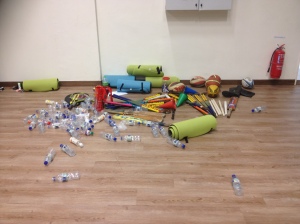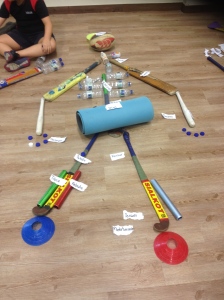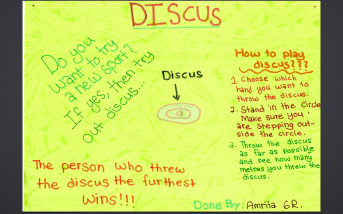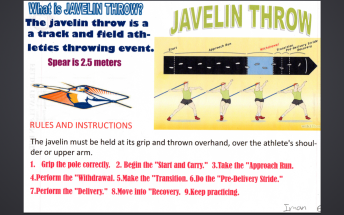 In the UK, where there is heavy emphasis on progression and differentiation from OFSTED, differentiating learning outcomes is another way you can cater to your learner’s needs. Although we don’t have OFSTED in International schools (how lucky are we?), differentiating learning outcomes is a good practice and a great way to personalise learning for the different abilities in your class.
In the UK, where there is heavy emphasis on progression and differentiation from OFSTED, differentiating learning outcomes is another way you can cater to your learner’s needs. Although we don’t have OFSTED in International schools (how lucky are we?), differentiating learning outcomes is a good practice and a great way to personalise learning for the different abilities in your class.
The reason why I’m discussing this is because I feel it’s important to identify the difference between outcomes and objectives and determine how they should be used before you can design an effective Scheme of Work (SOW) or Programme of Inquiry (POI). I have seen some objectives/outcomes that are too easy/hard, not achievable, wordy or not measurable and this can affect the progression of your students.
Learning objectives and outcomes are defined differently amongst teachers, schools and countries, which is fine but you have to be aware of it. For the purpose of this blog, I will define them as how I use them in my practice.
Learning Objectives (can also be known as Aims) – This describes what a student should know or be able to do at the end of the unit. The objectives should then be assessed through your formative and summative tasks, which I will discuss in a later post.
Learning Outcomes (can also be known as Aims or objectives) – This describes how a student will demonstrate their learning and is linked with your learning objectives. They don’t all have to be linked to all the objectives in one lesson. For example, you may have three outcomes for one lesson that is only appropriate to one objective. That is fine, as long as all the objectives are met through the implementation of the whole unit. Look at it this way, learning outcomes are small stepping stones to get to your overall objective(s).
Depending on the length of your lesson determines how many outcomes are appropriate. Another factor to take into account is the ability of your class, as some groups need longer than others to achieve the outcomes. (A general rule of thumb is to select 2-3 lesson outcomes for a 60-80 minute lesson). This is where differentiated learning outcomes are appropriate. You may have a weaker student who will take the whole lesson just to achieve one outcome, whereas a higher abled student will be able to achieve three outcomes in that same amount of time. For those outcomes to be effective and appropriate, you will need to know your class, so it may take a while to get them right, especially if you have just started with a new class.
The example I’m going to give below is based on 3 learning outcomes, so if you have more, you will need to modify them.*
1) The first outcome should be achievable by ALL students, with the focus on the lower abled student.
2) The second outcome should be achievable by MOST students, with the focus on the middle abled student.
3) The third outcome should be achievable by SOME students, with the focus on the higher abled student.
* Like I mentioned above, if you have more than 3 outcomes for your lesson, then you decide which ability groups the extra learning outcomes are for.
To put the above into practice, I have given a more specific example of how I’ve used this concept for my grade 5 Games PE class. I’m also going to highlight what I would be looking for to determine that students have achieved these outcomes.
1) All students are able to identify the different types of passes used in basketball.
What I’m looking for? Students are able to identify the different types of passes and possibly explain the process of implementing a successful pass in basketball. I know there are several passes and this outcome could be further differentiated by focusing on one or two passes, but as my students have had some experience in basketball from grade 4, they were ALL able to explore 3 types of passes and explain the basic technique for each one.
2) Most students are able to demonstrate the different types of passes.
What I’m looking for? Students are able to demonstrate the different types of passes in basketball in drills or short activities. This outcome is developed on the knowledge gained from the previous outcome, and again, I know there are several passes that they could demonstrate but MOST students had enough time to display these skills.
3) Some students are able to pass the ball in a game situation as a team.
What I’m looking for? Students are able to implement these passes in a game situation and this can be more achievable if this was done through a modified game, which focused on passing. I know this outcome is difficult for a younger student, but I am confident there will be a small number of students who will be able to do this and this outcome will stretch them. I also know that most of the students would be able to achieve this later in grade 6/7 when they have had the opportunity to explore basketball further and therefore allows for progression amongst grade levels.
The traffic light (colour) system is something that I have seen when I was a teaching assistant/trainee and it is something I have adopted in my own practice. You can use this colour system for activities/tasks that can be linked to the outcomes, as well as assessment grades, which allows for further differentiation in class. I am sure there are other ways you can use this colour system but the colours are not a major factor for differentiating learning outcomes. You can use other systems that you and your kids are familiar with.
My challenge for you is to try to differentiate learning outcomes for at least one group and reflect on if it has an impact on your learners and/or on your teaching practice?
Good luck!
















